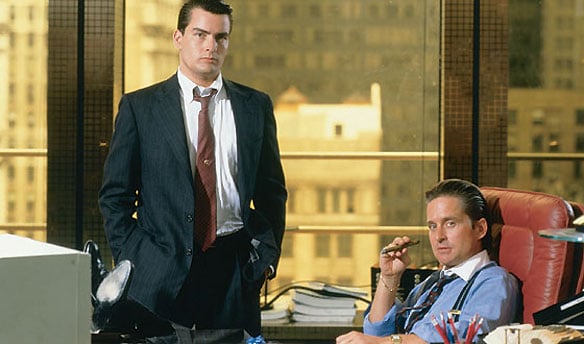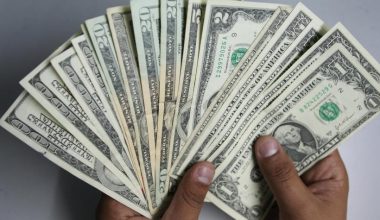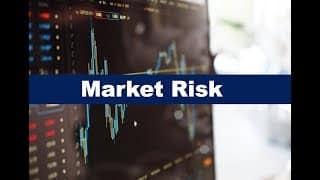The financial world, in all of its forms, makes for excellent filmmaking. Tragedy, satire, imagination, failure, and redemption have all appeared in Hollywood’s many finance movies over the years. While the majority of the movies depict financial professionals in a negative light, the incredible tales of excess, risk-taking, and, of course, greed all make for a compelling cinema piece. They are also essential movies for anyone considering or currently employed in the finance industry.
Barbarians at the Gates (1993)
The almost ignored 1993 TV movie about RJR Nabisco’s leveraged buyout (LBO). Although the film takes some liberties in depicting this true story, viewers will be surprised and entertained by Nabisco CEO F. Ross Johnson’s incompetence and greed, as well as the behind-the-scenes negotiations and skulduggery surrounding this famous LBO.
American Psycho (2000)
Christian Bale plays a wealthy investment banker with a dark secret in the movie version of the Bret Easton Ellis book. This was violent and thought-provoking thriller set in the backdrop of finance. While there is very little actual finance in this film, it does shed light on the unreal world that finance elite class inhabits. It also includes the huge disparity they have with one another and with reality.
Glengarry Glen Ross (1992)
This endlessly quotable film is an acclaimed big-screen production of a David Mamet play. It talks about a group of downtrodden real estate salesmen whose values have been completely eroded after years of working for their unscrupulous organization. This film depicts the greed and underhanded tactics that salespeople can face. It also features the pressure they often face from their bosses.
While the entire cast is excellent, Alec Baldwin’s “motivational speech” steals the show and highlights both the best and worst aspects of working under duress.
The Big Short (2015)
This is based on Michael Lewis’ nonfiction book The Big Short. Inside the Doomsday Machine, this film follows a group of seasoned traders as they become aware of the housing bubble that was responsible for the financial crisis between 2007-2008 before everyone else.
The movie is famous for its inventive approach to explaining complex financial instruments. A perfect example was Selena Gomez explaining synthetic CDOs at a poker table. It also features Margot Robbie explaining mortgage-backed bonds in a bathtub filled with champagne.
Rogue Trader (1999)
The story of Nick Leeson, a trader who single-handedly brought Barings Bank, the world’s second-oldest merchant bank, to its knees. Leeson, a rising star on the Singapore trading floor, blew up as quickly as he rose, attempting to hide massive losses in carefully veiled accounts from his bosses. It ultimately leads to the mother of all failed trades on a short straddle position on the Nikkei, which experienced a big sigma shift.
Although the film is amusing, Leeson’s story serves as a valuable lesson on risk management and financial oversight.
Wall Street: The Wolf of Wall Street (2013)
You’re missing out on some of Leonardo DiCaprio and Jonah Hill’s best performances if you haven’t seen this Scorsese-directed biopic. It’s about the rise and fall of a popular stock scammer, Jordan Belfort.

The Wolf of Wall Street, like Barbarians’ pump and dump, is focused on true events surrounding the notorious Stratton Oakmont, an over-the-counter trading company, and a pump-and-dump scheme that helped IPO many major public corporations in the late 1980s and 1990s.
Trading Places (1983)
Eddie Murphy plays a streetwise con artist who is conned into being the boss of a commodity trading company. This leads to Murphy inadvertently replacing his predecessor, a blue-blooded executive played by Dan Aykroyd, in this modern-day remake of The Prince and the Pauper.
While actual trading takes a back seat with characters adjusting to their new circumstances, the final 15 minutes of the film depict a frantic trading session in the orange juice futures pits that is very accurate. Without giving everything away, this scene alone is worth seeing. But the supporting cast, 80s nostalgia, and excellent acting from the leads make this a must-see.
Margin Call (2011)
Margin Call is perhaps the most financially authentic movie on the list. It depicts a 24-hour period in the life of a Wall Street company on the verge of collapse.
Margin Call makes no attempt to conceal its disdain for some of the world’s largest banks’ reckless risk-taking in the run-up to the 2008 financial crisis, such as trading complex derivative securities they barely understood. In one particularly moving scene in the film, two main characters discuss the imminent disaster that will soon befall their bank and the unsuspecting financial world. A janito however stands between them, totally oblivious to what is happening.
The Boiler Room (2000)
Although Barbarians at the Gates is set in the glitz and glitter of a corporate boardroom, Boiler Room is set at the very bottom of the financial ladder. Literally speaking, a pump and dump scheme. Although Boiler Room is a work of fiction, pump-and-dump companies and the misery they cause their victims are very real.
Boiler Room acts as a cautionary tale for newcomers to the stock market. It advises them to stick to straightforward, and well-established businesses with strong fundamentals.
Wall Street (1987)
The Oliver Stone classic that inspired thousands of college graduates to utter the immortal phrase “Blue Horseshoe loves Anacott Steel” as they rushed to their Series 7 exams is, surprisingly, the number one finance movie that every professional must see. Wall Street, which was created to depict the greed and hedonism synonymous with finance, still has tremendous power as a recruitment tool for traders, brokers, analysts, and bankers nearly 30 years later.
Despite the fact that the film serves as a warning about the risks of insider trading, who wouldn’t want to be Bud Fox or even Gordon Gekko (legally, of course) and indulge in our greedy side? After all, as Gekko would say, “Greed is sweet.”
What Is the Finance Movie on HBO Max?
Too Big to Fail (HBO):
A close examination of the 2008 financial crisis and the Wall Street players who decided the fate of the global economy in a matter of weeks.
What Is the Number 1 Famous Movie?
The 1939 premiere of Gone with the Wind is usually regarded as the most successful picture, with Guinness World Records estimating an adjusted global total of $3.4 billion in 2014.
What Is the Top 10 Best Movie?
Best movies of all time
- 2001: A Space Odyssey (1968) Film. Science fiction
- The Godfather (1972) Film. Thrillers
- Citizen Kane (1941) Film
- Jeanne Dielman, 23, Quai du Commerce, 1080 Bruxelles (1975) Film
- Raiders of the Lost Ark (1981) Film
- La Dolce Vita (1960) Film
- Seven Samurai (1954) Film
- The 2000 film In the Mood for Love.
What Is a CFA in Film?
Los Angeles’s Creative Film Awards.
Final Thoughts
Basically these movies are a must-see for any aspiring financial professional. But even if you aren’t considering a career in the industry, they will give you a glimpse into the wild and often ridiculous world of finance. Although, as the saying goes, “reality is stranger than fiction,” and as events like the 2008 recession, Enron’s demise, and the Madoff scandal have shown, real life can be much more unbelievable than any Hollywood tale.






